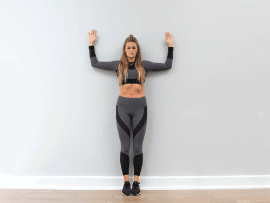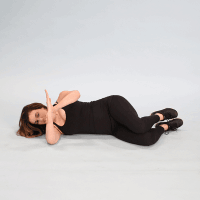Shoulder pain can arise from various causes, and one common culprit is shoulder impingement. If you’ve experienced discomfort while reaching overhead or performing certain movements, shoulder impingement might be the underlying issue. In this blog, we’ll delve into the intricacies of shoulder impingement, exploring its causes, symptoms, diagnosis, and treatment options.
Contents
What Is Shoulder Impingement?
Shoulder impingement, also known as subacromial impingement syndrome, is a common orthopedic condition that occurs when the soft tissues, such as tendons and bursa, in the shoulder joint, become compressed or irritated as they pass through a narrow space between the top of the shoulder blade (acromion) and the upper arm bone (humerus). This compression can lead to pain, discomfort, and reduced range of motion in the shoulder.
People who engage in overhead activities, such as athletes, painters, and those in professions that require frequent arm movements, are more susceptible to developing shoulder impingement. Poor posture, muscle imbalances, and previous shoulder injuries can also contribute to the condition.
The hallmark symptoms of shoulder impingement include pain when lifting the arm, especially during overhead movements, as well as weakness and limited range of motion. The discomfort may be localized to the outer part of the shoulder or radiated down the arm.
Causes Of Shoulder Impingement
This compression can be attributed to various factors, including:
- Anatomical Factors: Some individuals naturally have a smaller space between the acromion and humerus, making them more prone to impingement. This can result from genetic predisposition or variations in bone structure.
- Repetitive Movements: Engaging in activities that involve frequent overhead arm motions, such as lifting weights, swimming, or throwing, can lead to overuse and irritation of the tendons in the shoulder. This repetitive strain can cause inflammation and contribute to impingement.
- Muscle Imbalances: The shoulder joint relies on a delicate balance between different muscle groups for proper movement and stability. Weakness or imbalances in the muscles that support and stabilize the shoulder can alter its mechanics, increasing the risk of impingement. For example, weak rotator cuff muscles may lead to improper alignment and impingement.
- Poor Posture: Slouching or maintaining rounded shoulders can affect the alignment of the shoulder joint. Over time, poor posture can lead to changes in the positioning of the acromion and humerus, narrowing the space and promoting impingement.
- Injury or Trauma: Previous shoulder injuries or trauma, such as fractures or dislocations, can cause inflammation and structural changes within the joint. These changes may compromise the space within the joint, leading to impingement.
- Age and Degeneration: As we age, the tendons and soft tissues in the shoulder can naturally degenerate and become less flexible. This degeneration can increase the likelihood of compression and impingement.
- Sports and Occupation: Athletes or individuals with jobs that require repetitive arm movements or overhead activities are more susceptible to developing shoulder impingement due to the increased strain on the joint.
- Anatomical Variations: Some individuals may have anatomical variations, such as a hooked acromion or other bone abnormalities. These variations can reduce the available space in the shoulder joint, increasing the risk of impingement.
At-Home Exercises For Shoulder Impingement Relief
Dealing with shoulder impingement doesn’t always require a gym or specialized equipment. You can take significant steps toward relief and recovery from the comfort of your own home. Here are some effective at-home exercises to help alleviate shoulder impingement symptoms and improve your shoulder mobility:
Pendulum Swings
- Stand with your unaffected hand resting on a sturdy surface for support.
- Let your affected arm hang down and gently swing it in small circles, both clockwise and counterclockwise.
- Perform 10 circles in each direction.
Wall Angels
- Stand with your back against a wall and your feet slightly away from the wall.
- Keeping your arms against the wall, raise them overhead, and then lower them back down.
- Perform 10 repetitions.
External Rotation with Resistance Band
- Attach a resistance band to a doorknob or another secure anchor point at waist height.
- Hold the band in your affected hand with your elbow bent at a 90-degree angle.
- Keeping your elbow close to your side, rotate your forearm outward against the resistance of the band.
- Perform 2 sets of 10 repetitions on each side.
Scapular Squeezes
- Sit or stand with your back straight and your arms relaxed at your sides.
- Squeeze your shoulder blades together as if trying to pinch a pencil between them.
- Hold the squeeze for 5 seconds, then release.
- Perform 3 sets of 10 repetitions.
Doorway Stretch
- Stand in a doorway with your elbow bent at a 90-degree angle.
- Place your forearm and hand against the door frame.
- Gently lean forward, feeling a stretch across the front of your chest and shoulder.
- Hold for 20-30 seconds on each side.
Sleeper Stretch
- Lie on your unaffected side with your affected arm on top.
- Bend your affected arm at the elbow to 90 degrees and rest your forearm on the bed.
- Gently press your affected hand downward, feeling a stretch in the back of your shoulder.
- Hold for 20-30 seconds.
Isometric Shoulder External Rotation
- Hold a resistance band between your hands, with your elbows bent at a 90-degree angle and your forearms parallel to the floor.
- Keep your affected arm stationary while gently pushing outward against the resistance of the band.
- Hold for 10 seconds, then release. Repeat for 3 sets of 10 repetitions.
Remember:
- Perform these exercises within a pain-free range of motion.
- Start with a gentle warm-up, such as arm circles or shoulder shrugs.
- If any exercise causes pain or discomfort, stop immediately.
- Consistency is key. Aim to perform these exercises daily or as recommended by your healthcare professional.
Treatment For Shoulder Impingement
Finding relief from shoulder impingement involves a combination of strategies to reduce pain, improve mobility, and address the underlying causes. Here are some effective treatments to consider:
- Rest and Activity Modification: Give your shoulder time to heal by avoiding activities that exacerbate the pain, especially those involving overhead movements. Modify your daily activities to minimize strain on the affected shoulder.
- Physical Therapy: A physical therapist can design a personalized exercise program to strengthen the muscles around the shoulder joint, improve posture, and restore proper mechanics. They can guide you through exercises that gradually increase your range of motion and strength.
- Anti-Inflammatory Medications: Over-the-counter nonsteroidal anti-inflammatory drugs (NSAIDs), such as ibuprofen, can help reduce pain and inflammation. Consult your doctor before taking any medication.
- Corticosteroid Injections: In some cases, a doctor may recommend a corticosteroid injection into the shoulder joint to provide temporary relief from pain and inflammation.
- Cold and Heat Therapy: Applying ice packs to the affected area can help reduce inflammation and pain. Later, you can use heat therapy to relax muscles and promote blood circulation.
- Posture Correction: Improving your posture can help prevent unnecessary strain on the shoulder joint. Maintain a neutral spine and engage your core muscles to support the shoulder girdle.
- Ergonomic Adjustments: If your shoulder impingement is related to your workplace or daily activities, making ergonomic adjustments can alleviate strain. Adjust your workstation, chair, and computer setup to promote proper posture.
- Manual Therapy: Hands-on techniques performed by a skilled physical therapist or chiropractor can help release muscle tension, improve joint mobility, and enhance overall shoulder mechanics.
- Surgical Intervention: In cases where conservative treatments fail to provide relief, surgical options might be considered. Arthroscopic procedures can help create more space in the shoulder joint and address any underlying issues.
Prevention Of Shoulder Impingement
Preventing shoulder impingement involves adopting healthy habits and practices that promote shoulder joint health and reduce the risk of irritation or inflammation. Here are some preventive measures to consider:
- Strengthen Shoulder Muscles: Engage in regular exercises that focus on strengthening the muscles around your shoulder joint, particularly the rotator cuff muscles. A strong and balanced shoulder girdle can help support proper mechanics.
- Warm-Up and Stretch: Prior to engaging in physical activities or exercise, perform a proper warm-up that includes gentle shoulder stretches. This helps prepare your muscles and joints for movement.
- Avoid Overhead Activities: If you’re engaging in activities that involve repetitive overhead movements, take regular breaks and ensure that you’re using the proper form. Avoid overloading your shoulder joints.
- Diversify Workouts: Incorporate a variety of exercises into your fitness routine to prevent overuse of specific muscle groups. This can help reduce the strain on your shoulders.
- Proper Lifting Technique: When lifting objects, especially heavy ones, use your legs and core muscles to share the load. Keep the object close to your body and avoid lifting with your arms only.
- Ergonomic Setup: Arrange your workspace, whether at home or the office, to support proper posture. Adjust your chair, desk, and computer screen height to promote an ergonomic setup.
Conclusion
In conclusion, shoulder impingement can be a source of significant discomfort and limitation, affecting your daily activities and overall quality of life. Understanding the causes, symptoms, and treatment options is key to finding relief and preventing future issues.
Remember that early intervention and proper management are crucial in addressing shoulder impingement effectively. Whether you opt for conservative treatments, physical therapy, or even surgical intervention in severe cases, the goal is to restore pain-free mobility and function to your shoulder joint.
If you’re experiencing Shoulder pain, physical therapy for shoulder pain at PhysioMantra can help: Book an online physical therapy session.










